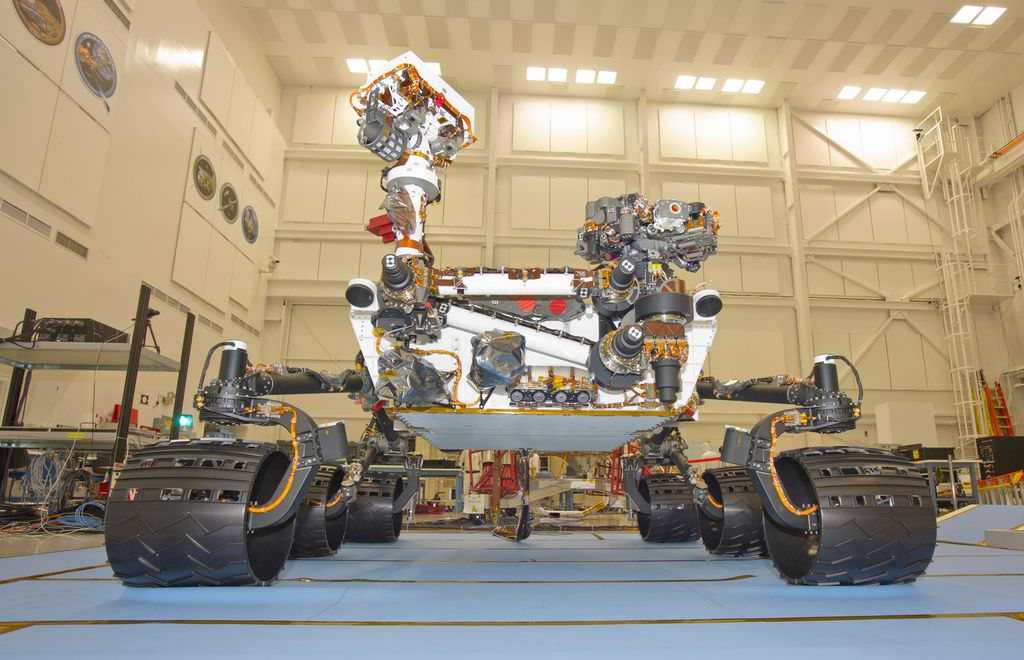[/caption]
Just over a year from now, NASA's Curiosity rover should be driving across fascinating new landscapes on
the surface of Mars
if all goes well. Curiosity is NASA next
Mars rover
– the Mars Science Laboratory - and is targeted to launch during a three week window that extends from Nov. 25 to Dec. 18, 2011 from Cape Canaveral Air Force Station, Fla..
At NASA's Jet Propulsion Laboratory (JPL), Pasadena, Calif., engineering specialists have been putting Curiosity through the final phase of mobility tests to check out the driving capability, robotic arm movements and sample collection maneuvers that the robot will carry out while traversing the landing site after plummeting through the
Martian
atmosphere in August 2012.
Take a good look at this album
of newly released images from JPL showing Curiosity from the front and sides, maneuvering all six wheels, climbing obstacles and flexing the
robotic arm
and turret for science sample collection activities as it will do while exploring the red planet's surface.
[caption id="attachment_86630" align="aligncenter" width="580" caption="Mars Rover Curiosity's Arm Held High"]
[/caption]
Curiosity is following in the footsteps of the legendary
Spirit
and
Opportunity
rovers which landed on opposite side of Mars in 2004.
"The rover and descent stage will be delivered to the Payload Hazardous Servicing Facility at the Kennedy Space Center (KSC) later in June," Guy Webster, public affairs officer at JPL, told me. An Air Force C-17 transport plane has already delivered the heat shield, back shell and cruise stage on May 12, 2011.
"The testing remaining in California is with engineering models and many operational readiness tests," Webster elaborated. "Lots of testing remains to be done on the flight system at KSC, including checkouts after shipping, a system test, a fit check with the RTG, tests during final stacking."
[caption id="attachment_86625" align="aligncenter" width="580" caption="Mars Rover Curiosity, Turning in Place during mobility testin. Credit: NASA/JPL-Caltech"]
[/caption]
The three meter long rover will explore new terrain that will hopefully provide clues as to
whether Mars harbored
environmental conditions that may have been favorable to the formation of microbial life beyond Earth and preserved evidence of whether left ever existed in the past and continued through dramatic alterations in Mars history.
NASA is evaluating a list of four potential landing sites that will offer the highest science return and the best chance of finding a potentially habitable zone in a previously unexplored site on the red planet. [caption id="attachment_86626" align="aligncenter" width="438" caption="Mars Rover Curiosity Raising Turret"]
[/caption]
[caption id="attachment_86627" align="aligncenter" width="580" caption="Mars Rover Curiosity, Left Side View"]
[/caption]
[caption id="attachment_86628" align="aligncenter" width="580" caption="Mars Rover Curiosity with Wheel on Ramp"]
[/caption]
[caption id="attachment_86629" align="aligncenter" width="580" caption="Mars Rover Curiosity, Right Side View"]
[/caption]
 Universe Today
Universe Today
